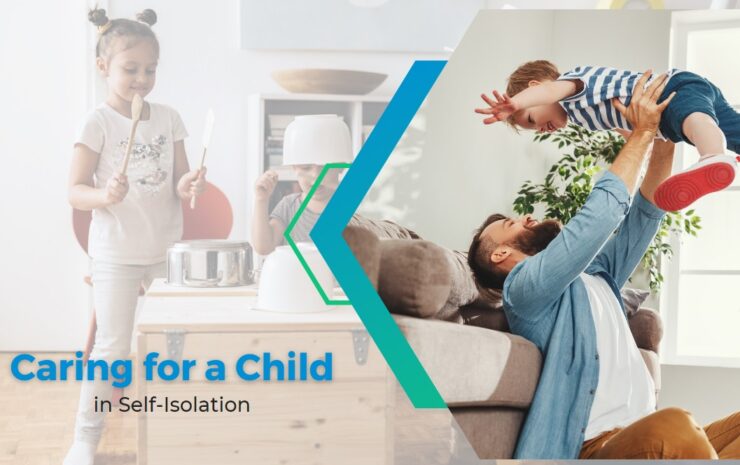As the world continues to navigate through the COVID-19 pandemic, parents may find themselves in a situation where their child needs to self-isolate. This can be a daunting task, especially for parents who are already struggling to balance work and other responsibilities.
However, with the right knowledge and tools, caring for a child in self-isolation can be made easier. In this article, we’ll provide expert tips and guidance on how to care for a child in self-isolation, covering everything from physical and emotional well-being to practical considerations such as schooling and entertainment.
Discuss the situation with your child
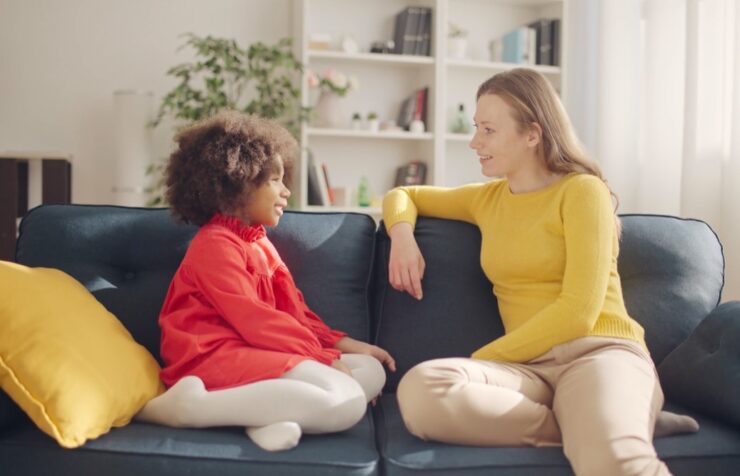
It’s difficult to explain the need for self-isolation to a child, but it is important to make them fully understand why they are required to remain at home and take extra care.
Start by telling your child that it is common for people to catch the virus, just like the flu. Make sure they know that even with self-isolation and proper hand washing, they can still catch the virus and pass it on. Speak openly and honestly about the situation while reassuring them that they will be safe if they follow the provided guidance. Our emotions can affect our health, so try your best to keep this conversation free from negativity as much as possible.
Explain clearly how long you expect them to stay in self-isolation and what that means for their daily routines. Many children may already be familiar with some of the methods of preventing infection (e.g., frequent hand washing). Ask your child what other preventive techniques they’d feel comfortable following during their time away from school or group activities e.g., avoiding physical contact with other people or wearing face masks when out in public areas.
Be positive during this conversation so your child feels more relaxed and ready for self-isolation – recognize this period will be a challenging time for them too! Schedule regular virtual play dates with friends over video calls or online activities; you also have an opportunity now to have conversations about hygiene practices while reinforcing good habits such as washing hands with soap often!
Create a plan for self-isolation

Creating a plan for your child’s self-isolation can be one of the most important steps for you to take to ensure the experience is as positive as possible. It is essential that everyone in the household understands and follows the plan, with clear expectations and guidelines. Here are some key things to consider when planning:
– The length of time your child must self-isolate: Generally, self-isolation periods for cases and contacts should last 14 days from symptom onset or positive test result (if applicable); 10 days following last contact with a case; or 10 days after travel from an area with a higher risk of COVID-19 transmission.
– Adjusting your daily routines: While it might not be easy to completely adjust your daily routine or work schedule, try to set aside specific times each day dedicated solely to spending time with your child while they are self-isolating. Consider delegating tasks associated with work or other activities outside of the home during dedicated family times so that no distractions get in the way. While even this time can’t be mutual physical contact, try talking through creative ways you can spend time together including online games.
– Making sure only necessary people are at the home: Establishing clear communication protocols about who is allowed in the house can help reduce everyone’s stress levels—especially if anyone living in the household is considered high risk due to their age or health condition. Remember that even grocery deliveries may put those people at risk and consider having younger family members who don’t live with you do that task instead.
– Establishing physical distancing rules: If more than one person is staying with your child during their period of isolation, everyone should understand that physical distancing requirements must still be followed (e.g., maintaining a 1–2 meters distance apart). This could mean making changes in floor plans around shared living spaces such as bedrooms and bathrooms if needed – any changes should be clearly discussed beforehand so there’s an understanding of why boundaries need to be created and respected.
Prepare the home for self-isolation

Before your child arrives back home, ensure that the home is clean and free of potential cross-contamination. Minimize contact between family members who will still be at home, if possible – it’s best not to get too close to one another in an isolated environment.
The following steps are advisable:
- Cleaning soft surfaces regularly with disinfectants such as sofas, curtains and carpets; anything that could potentially be contaminated with the virus.
- Disinfecting any shared areas of the house – this might include bathrooms and kitchens – where there is a risk of cross-contamination between family members who are still at home.
- Keeping all windows closed to minimize air circulation between rooms.
- Washing hands regularly throughout the day with warm water for a minimum of 20 seconds each time and use good hand sanitizer when required i.e after eating or drinking etc;
- Stocking up on food to last for 14 days so you don’t need to make unnecessary trips out of the house;
- Restricting contact to one other person outside the household if necessary i.e healthcare professional, nursery or school staff, etc;
- Having activities available around your house that keep your child engaged and entertained during isolation period as well as educational materials such as books or tablet games which help with learning new skills during downtime;
- Ensuring there are enough toys for imaginative play, especially if siblings share a room
Maintaining Routines

By continuing to follow daily routines, you can help your child feel safe and in control during their self-isolation period. Establishing and maintaining a daily routine for children during self-isolation can help them feel more secure and stable in the midst of all the uncertainty. Routines can also help children cope with any feelings of loneliness or boredom they may have.
Let’s look at ways to maintain routines even in a time of social distancing.
Establish a daily routine
The central goal of establishing a daily routine for a child who needs to self-isolate is to ensure that the child feels safe, secure, and comfortable during their time out of school. Keeping their daily routine consistent and predictable can help manage anxieties and provide much-needed structure. Additionally, it will help children adjust more quickly when they are able to return to school.
It is important to work together with the child’s teacher and caregiver(s) to make sure the child’s daily routine is in line with expectations at home and at school. Developing a specific plan that outlines what the child will be doing throughout each day will prevent long periods of boredom or restlessness. Here are some tips for creating an effective daily routine:
- Establish a consistent bedtime, wake-up time, meal times and snack times.
- Schedule regular breaks throughout the day such as stretching or getting some fresh air (weather permitting).
- Create dedicated time for studying, physical activity/exercise, creative play, chores/responsibilities, relaxation/reading/listening to music etc.
- Allow for unstructured playtime where children can use their imagination and engage in activities of their choice.
At first it may be challenging for children who need to self-isolate to adjust to a new routine — with patience and understanding from parents this transition period can become smoother over time. Encourage your children that by following their routines they are helping themselves stay healthy in addition to helping keep their families safe!
Encourage physical activity
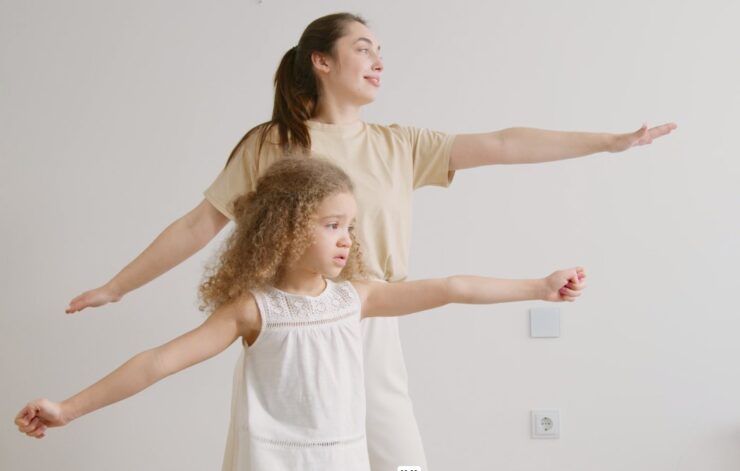
Getting regular physical activity and exercise can help promote both physical and mental health for a child who is self-isolating. While it may be difficult to maintain regularly scheduled activities and exercise routines, ensuring that your child gets enough physical activity is essential. As most gyms and sports facilities are closed during this period, it’s important to encourage them to do some form of physical activity every day at home.
Try setting a routine with your child each day and pick activities they enjoy, such as dancing, playing ball games, running around the house or even doing exercise videos online with them. This is an excellent opportunity for parents to get involved in exercising with their children and lead by example. Doing something like running around the house together or making it a game like one that involves running from one chair to another can be very enjoyable for kids while still getting their heart rates up.
Encourage your children to plan out their own activities throughout the day as well. For example, they can spend 20 minutes on jumping jacks or sit-ups right after breakfast; take 10 minutes mid-afternoon for squats or mountain climbers; then engage in some stretching before going to bed at night. By establishing this routine daily you will be helping them stay active during self-isolation while benefitting from the mental break provided by physical exercise as well.
Create a schedule for learning
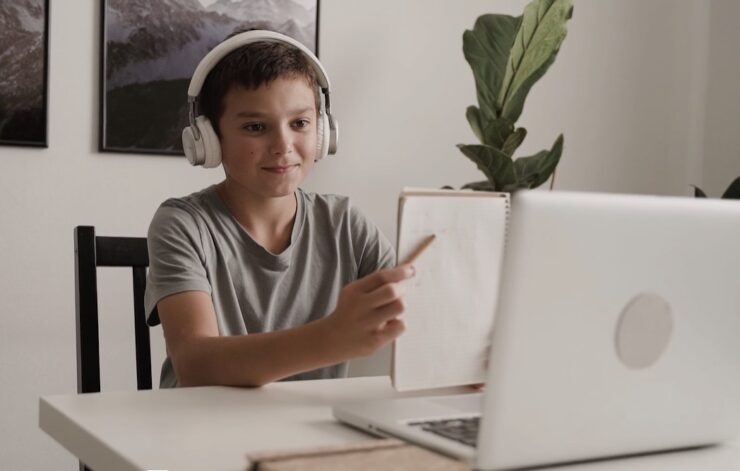
Creating a schedule for the day can help your child stay on track and manage school work. The key is to find a daily routine that works for you and your child. It’s important to keep in mind that it is ok if the schedule has to change from time to time due to different circumstances.
Start by creating a daily schedule for learning time and sports or other activities, as well as time for meals and breaks in between learning sessions. Planning regular physical activity is also important for mental health, so make sure to build some time for physical activity during the day. Additionally, encourage your child to take regular breaks like getting up to move around, stretching, or listening to music in order to prevent fatigue from too much screen time.
Having an established routine will help reduce anxiety and give structure during self-isolation.
Socializing with Friends and Family
It is important to keep children socially connected, even when they need to self-isolate. Socializing with friends and family can help children stay connected and engaged, as well as provide an outlet for positive reinforcement and support.
However, it is important for parents to be mindful of how to ensure that socializing is done in a safe way. This section will highlight the best ways to help your child stay connected to their peers and family in a safe way.
Utilize video conferencing
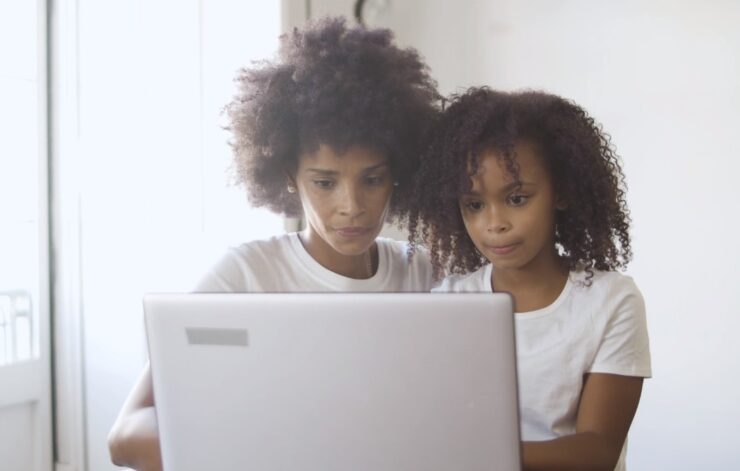
Learning how to use audio and video calling apps can help your child maintain social connections with their friends and family, even if they need to socially distance themselves from loved ones.
Getting comfortable with different video conferencing platforms will allow your child to join in on conversations, birthday parties, game nights, family dinners or other events that don’t require physical contact. Many platforms also allow users to share games or activities while they talk, creating opportunities for bonding without physical contact. Once you have chosen a platform that works for you, make sure your child is familiar with the necessary operations and set-up of the app so that it becomes second nature for them. This will help reduce stress in order to maximize the positive aspects of virtual socialization.
In virtual friendships it is also important to remember to stay connected with each other throughout self-isolation. Even when members of an online group may not need direct assistance, taking time out of your day to check in on one another can create a sense of stability during this unprecedented time. Additionally, setting up recurring activities (like playing games or engaging in art projects)can bring consistency even when nothing else is the same right now.
Take advantage of virtual playdates

The best way to keep relationships strong and reduce feelings of loneliness when faced with social distancing is to take advantage of virtual playdates. Social networks, such as Skype, FaceTime and Zoom, provide the perfect opportunity for parents and their children to connect with friends and family members from anywhere in the world.
Using video chat services for playtime can serve multiple purposes. Not only does it help to preserve relationships, but it’s also great entertainment on days when an outing isn’t possible or would be unsafe. Playing games together, singing songs or just talking are all great ways to interact and have fun virtually. Parents can also use the time spent online with a friend or family member as an opportunity to teach their child healthy practices concerning social media (i.e., protecting their privacy).
Additionally, parents should keep in mind that virtual activities such as scheduling a playdate may not be feasible if either child or parent lacks access to internet service or technology resources – having a backup plan could prove helpful in these circumstances. If using technology is not an option, having creative ideas for engaging activities between friends who can’t physically interact is key (learning how to draw something special together over the phone works!).
Ultimately, staying connected with friends and family during this challenging time will help everyone feel less isolated and more supported through it all!
Have regular check-ins with family
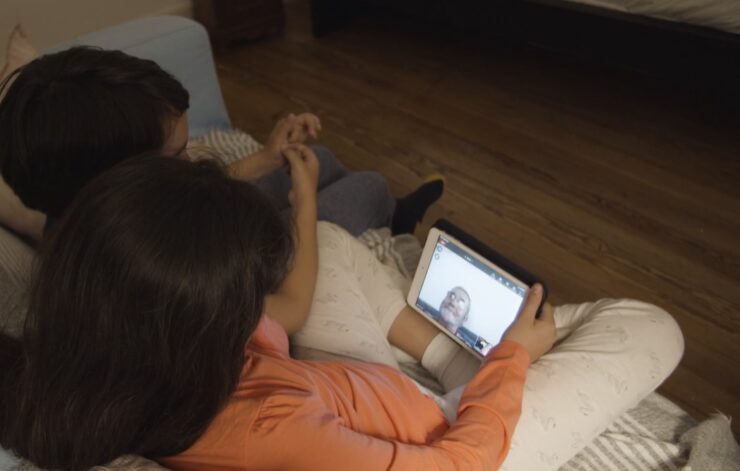
It can be difficult for children to self-isolate, particularly if they have to miss out on social events with friends and family. To help them feel better, it is important to stay in touch with families and friends during this time. Regular check-ins will help your child feel included, valued and connected. Family members or close friends should try and stay in contact with your child, even if it is just by texting or calling every day or two.
Having video calls with a grandparent or other extended family may help children who need to self-isolate feel connected. This is particularly important for older relatives who might not be able to come and visit as much as usual. Set up activities that allow the whole family to connect online. It can also be fun for children to join in special family occasions remotely, such as birthdays, anniversaries and holidays!
Encourage other friends of your child’s age group who could be trusted not to spread the virus if they are exposed while visiting are welcome too (though they should follow social distancing rules). Have outdoor gatherings that follow local safety guidelines instead of having them in close quarters indoors. You could organize remote activities like film nights or game nights where everyone plays together online instead of meeting up physically – this could promote bonding among all those involved!
Managing Stress and Anxiety
The stress and anxiety of self-isolation are real and can be difficult for children to handle. It can also be difficult for parents to help their children with this stress, as this is a new situation for everyone.
It’s important to have tools and strategies in place to help kids cope with the anxieties associated with self-isolation. Let’s discuss some tips for helping children manage their stress and anxiety during this time.
Encourage your child to talk about their feelings
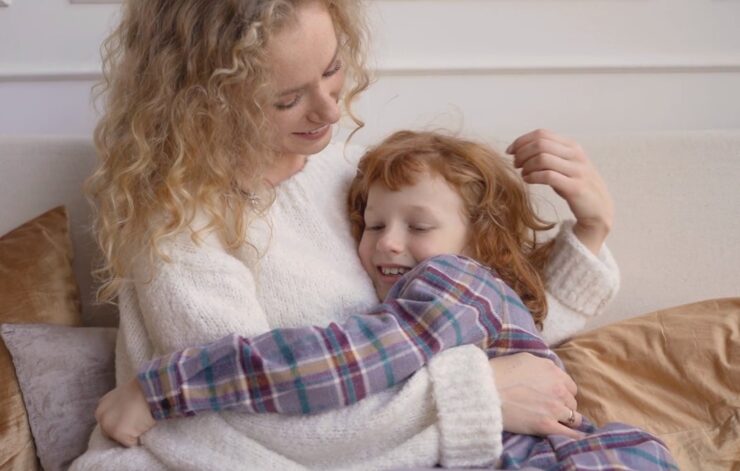
When children have to self-isolate, it can be an isolating and difficult experience. Children may feel a range of emotions — fear, sadness, anxiousness, boredom or loneliness. It’s important to talk about these feelings with your child and help them express their thoughts in a healthy way.
Encourage your child to talk about how they’re feeling without judgment. During the conversation be present and practice active listening. Ask clarifying questions such as, “What makes you feel scared?” or “How can I support you right now?” Help your child find words for their thoughts and feelings in order to make sense of them together. Once your child is in touch with what they are feeling, provide education on managing stress and anxiety by teaching them relaxation techniques such as mindful breathing or progressive muscle relaxation. This can help keep things in perspective and reduce undue worry.
It’s also important to remind children that it’s ok to feel upset during this time — that these are normal reactions to being isolated from friends and loved ones for an extended period of time — but validating their feelings doesn’t mean indulging negative behaviors out of sympathy. It is possible for both empathy and expectations (ie: continuing tasks such as school work) coexist for children who need self-isolation caregiving. This helps frame normal expectations despite COVID-19 restrictions while maintaining pleasant connections with the child. Practicing healthy behaviors together can lessen distress in the home during these stressful times.
Help your child find healthy coping mechanisms
When facing a stressful situation, children may turn to unhealthy coping strategies such as substance abuse, disordered eating, self-harm, or avoidance. It’s important to help your child find healthy ways to address their stress and anxiety.
- Provide outlets: Enable your child to express themselves creatively by encouraging hobbies such as drawing, writing, playing music or dance. This encourages positive coping skills that can help in times of distress.
- Practice relaxation techniques: Teach your child relaxation techniques such as slow, deep breathing and mindful meditation. This can help them feel calm and grounded during difficult times.
- Encourage social connections: Depending on the severity of their Covid-19 diagnosis, your child may be able to reach out virtually to family and friends for social contact. This can reduce feelings of loneliness and isolation caused by self-isolation at home.
- Promote physical activity: Exercise is known to reduce feelings of depression and stress due to the release of endorphins — feel-good hormones that boost overall well-being. Encourage regular exercise outside if possible or teach them yoga or other calming physical activities within the home.
By providing healthy ways for your child to manage negative emotions during this uncertain time in their life you’re helping them build resilience now and for the future – setting them up for success both emotionally and mentally!
Provide extra support and reassurance
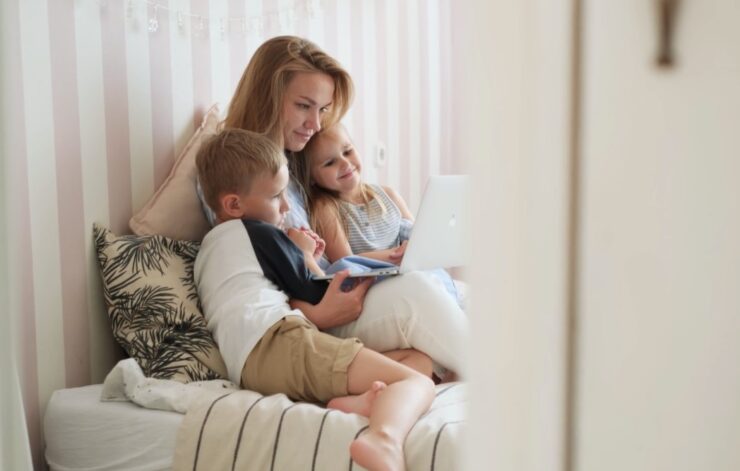
It can be a difficult experience, especially for children and young people who may not be used to spending long periods of time on their own. It is important to provide extra support and reassurance during this time. Encourage your child to share how they are feeling by asking open-ended questions such as ‘how are you feeling today?’ and listening attentively, without judgement or interruption.
Encouraging your child to express their emotions in a healthy way can help them manage their stress and anxiety levels. Positive reinforcement will help boost your child’s confidence and morale while they are self-isolating, so let them know that you are proud of their efforts when they demonstrate resilience. Activities like listening to music, indulging in creative activities like drawing or playing an instrument can also help reduce stress levels among children in self-isolation.
Finding resources and support
Finding resources and support is important when caring for a child who needs to self-isolate. It can be helpful and reassuring to speak with experts or organizations that can provide information, advice and guidance. Depending on where you live, local health organizations or community centers may provide specialized assistance that you can use to get answers and help.
Many organizations have developed online resources for families with children in isolation. You may want to look at the websites of your local hospital, health care provider or county health department for information about how to care for your child at home during self-isolation. You should also look into any virtual services, such as telehealth or remote support that may be available in your area.
You will also want to seek out support from family, friends and colleagues who are available to help you while the child is self-isolating. If the situation becomes too stressful, consider seeking professional counseling through a local mental health provider or speaking with your doctor about services available in your area that are tailored toward families facing such difficult conditions.
Staying positive during self-isolation

Staying positive can be difficult for both adults and children during self-isolation. However, there are some steps that you can take to help your child maintain a positive outlook:
- Encourage your child to talk and express their feelings. Make sure that your conversations focus on the small wins, things they’re looking forward to once the isolation is over, and how strong they are.
- Give your child as much control as possible within safety limits by allowing them to choose their own activities (and within appropriate age groups), within the self-isolation routine.
- Help them stay connected to family and friends by setting guidelines around virtual meetups such as friend-to-play dates or facetime calls with extended family members. This helps create a sense of normalcy that can be very comforting, especially in an unsettling time like this where many routines have been impacted.
- Celebrate accomplishments while in isolation so they feel they have something to look back on; this could include creating a chart displaying all the completed activities during this period of self-isolation at home or expressing gratitude for all of the loving friends/family members supporting them during these circumstances, etc…
- Get creative! Find creative ways to continue routines relatively unaffected or disrupted due to self-isolation, such as dancing and yoga at home for example!
Conclusion
In conclusion, caring for a child in self-isolation can be a challenging task for any parent, especially with the uncertainty of the ongoing pandemic. However, by following the expert tips and guidelines provided, parents can ensure their child’s physical and mental well-being while minimizing the risk of spreading the virus to others.
Remember to prioritize open communication, self-care, and positivity during these difficult times, and seek professional help if needed. With the right support and resources, parents can successfully navigate their child’s self-isolation period and help them emerge stronger and healthier.

